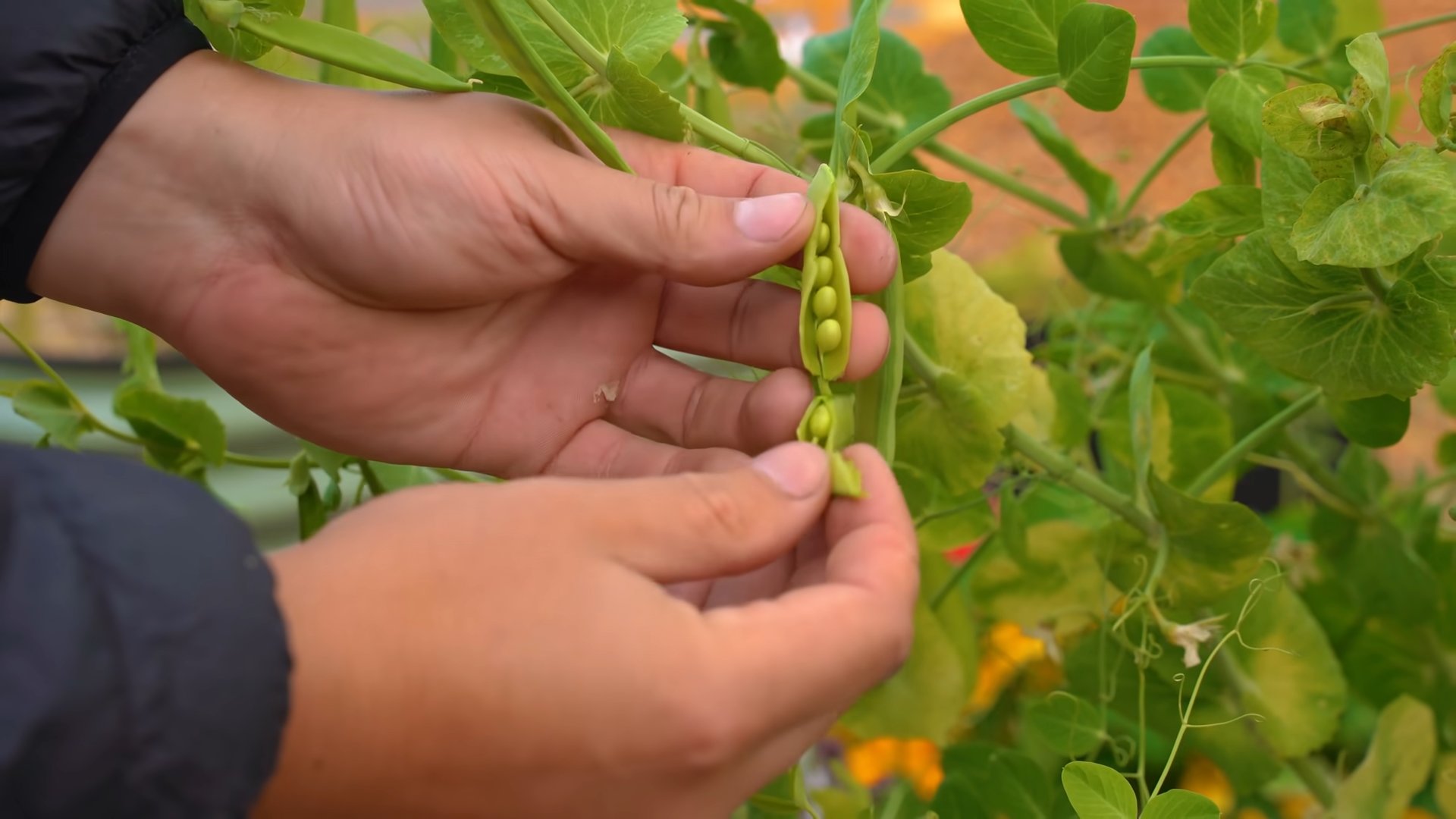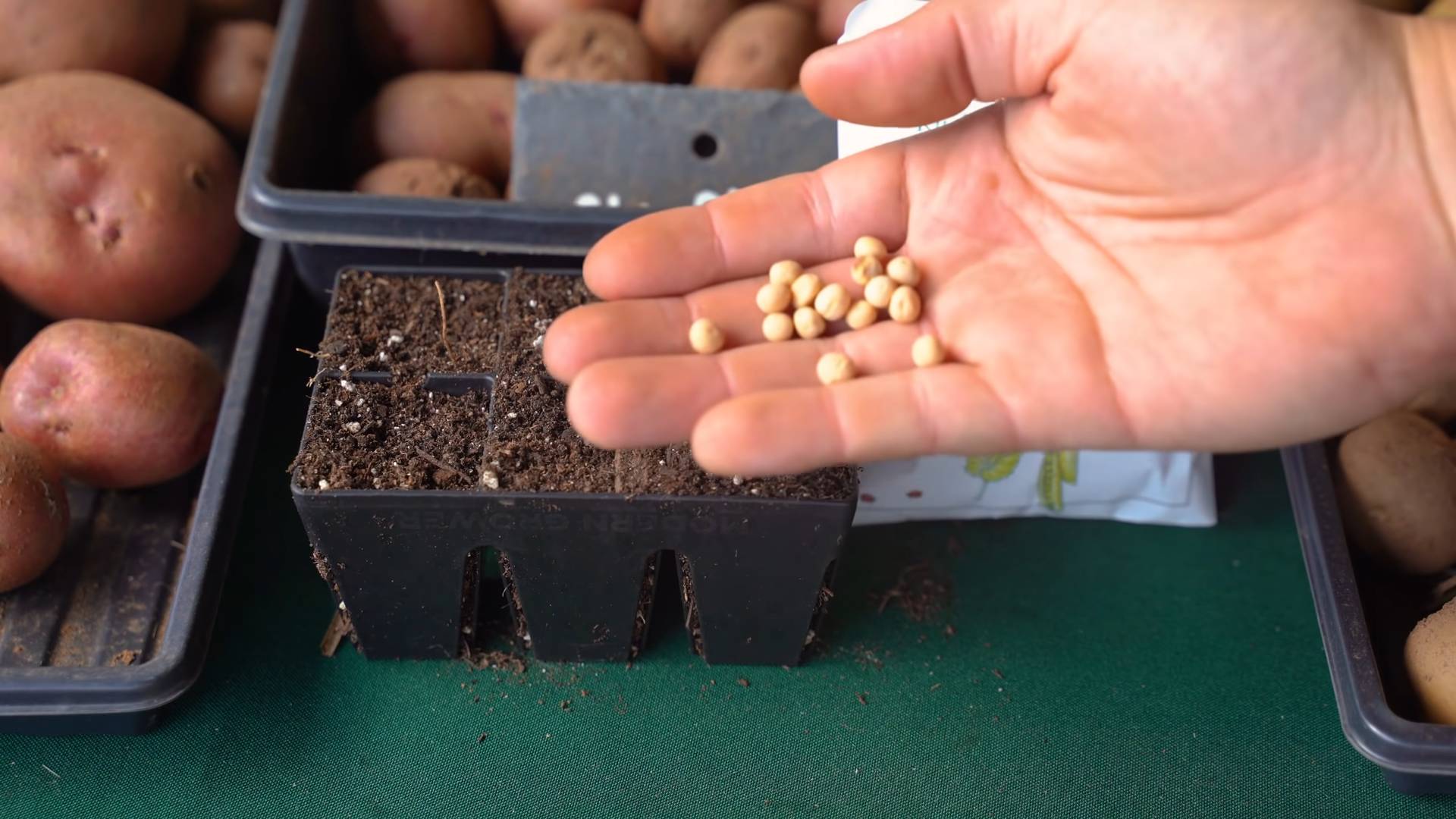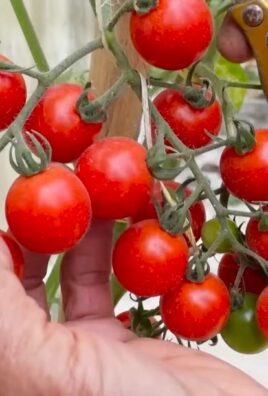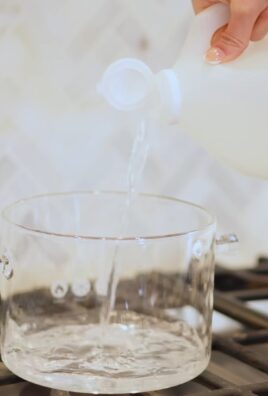Growing Peas Indoors might sound like a whimsical dream, especially if you’re picturing sprawling vines taking over your living room! But trust me, it’s a surprisingly achievable and rewarding project, even if you don’t have a sprawling garden. For centuries, peas have been a staple crop, providing sustenance and a touch of sweetness to cuisines worldwide. From ancient civilizations to modern-day kitchens, their versatility is undeniable.
But why bother bringing this outdoor favorite inside? Well, imagine enjoying fresh, crisp pea shoots in the dead of winter, or having a readily available supply of tender pods when your outdoor garden is still thawing. That’s the magic of growing peas indoors! This DIY guide will equip you with simple, effective tricks and hacks to cultivate your own indoor pea patch, regardless of your experience level. We’ll cover everything from choosing the right varieties to providing optimal growing conditions, ensuring you can savor the delightful taste of homegrown peas year-round. So, let’s ditch the winter blues and bring a little bit of spring into our homes, one pea at a time!

Growing Peas Indoors: A Complete DIY Guide
Hey there, fellow gardening enthusiasts! Ever dreamt of enjoying fresh, sweet peas even when the weather outside is frightful? Well, dream no more! I’m going to walk you through the process of growing peas indoors, step-by-step. It’s easier than you might think, and the reward of homegrown peas in the middle of winter (or any time you choose!) is totally worth it.
Choosing Your Pea Variety
First things first, not all pea varieties are created equal when it comes to indoor growing. You’ll want to opt for bush or dwarf varieties, as they stay compact and won’t require extensive trellising. Here are a few of my favorites:
* ‘Little Marvel’: A classic dwarf variety, known for its sweet flavor and early maturity.
* ‘Tom Thumb’: Super compact, perfect for small spaces. These are tiny but mighty!
* ‘Sugar Ann’: A bush snap pea variety that produces delicious, edible pods.
* ‘Oregon Sugar Pod II’: Another excellent snap pea choice, known for its disease resistance.
Gathering Your Supplies
Okay, now that we’ve picked our pea champions, let’s gather the necessary supplies. Here’s what you’ll need:
* Pea Seeds: Obviously! Make sure they’re fresh for the best germination rate.
* Containers: Choose pots that are at least 6 inches deep and wide. I prefer using plastic pots with drainage holes. You can also use grow bags.
* Potting Mix: Use a high-quality, well-draining potting mix. Avoid using garden soil, as it can compact and hinder drainage.
* Grow Lights: Peas need plenty of light to thrive indoors. A good LED grow light is essential.
* Trellis or Support: Even bush varieties benefit from some support. Small trellises, bamboo stakes, or even twigs will do the trick.
* Watering Can or Spray Bottle: For gentle watering.
* Optional: Seed Starting Tray and Dome: For pre-sprouting your seeds.
* Optional: Liquid Fertilizer: A balanced liquid fertilizer to feed your peas once they start growing.
Planting Your Pea Seeds
Alright, let’s get our hands dirty! Here’s how to plant your pea seeds:
1. Soak the Seeds (Optional): Soaking your pea seeds in water for 12-24 hours before planting can help speed up germination. I usually do this, but it’s not strictly necessary.
2. Fill Your Containers: Fill your containers with potting mix, leaving about an inch of space at the top.
3. Sow the Seeds: Sow the pea seeds about 1 inch deep and 1-2 inches apart. I usually plant 3-4 seeds per pot, just to be on the safe side.
4. Cover with Soil: Gently cover the seeds with potting mix and lightly pat down the soil.
5. Water Thoroughly: Water the soil thoroughly until it’s evenly moist.
6. Cover (Optional): If you’re using a seed starting tray and dome, place the pots inside and cover them with the dome. This will help create a humid environment that promotes germination.
7. Place Under Grow Lights: Place the containers under your grow lights. If you’re not using a seed starting tray, you can place the pots directly under the lights.
Germination and Early Growth
Now comes the waiting game! Here’s what to expect during germination and early growth:
1. Germination: Pea seeds typically germinate within 7-14 days, depending on the temperature and moisture levels. Keep the soil consistently moist during this time.
2. Remove the Dome (If Used): Once the seedlings emerge, remove the dome from the seed starting tray.
3. Thinning (If Necessary): If multiple seedlings emerge from the same spot, you may need to thin them out, leaving only the strongest seedling in each spot. I usually just snip off the weaker ones at the soil level.
4. Adjust Grow Lights: Adjust the height of your grow lights so that they are a few inches above the seedlings. As the seedlings grow, you’ll need to raise the lights accordingly.
5. Watering: Water the seedlings regularly, keeping the soil consistently moist but not waterlogged. I usually water when the top inch of soil feels dry to the touch.
6. Air Circulation: Ensure good air circulation around the seedlings to prevent fungal diseases. A small fan can help with this.
Providing Support and Training
As your pea plants grow, they’ll need some support to climb. Here’s how to provide support and train your peas:
1. Install Trellis or Support: Once the pea plants are a few inches tall, install a trellis or other support system in the pot.
2. Guide the Vines: Gently guide the pea vines towards the trellis or support. They’ll naturally start to climb on their own.
3. Tie (If Necessary): If the vines are struggling to grab onto the support, you can gently tie them to it with soft twine or plant ties.
4. Pruning (Optional): You can prune the pea plants to encourage bushier growth. Simply pinch off the tips of the vines.
Fertilizing Your Pea Plants
To ensure healthy growth and abundant pea production, you’ll need to fertilize your pea plants.
1. Start Fertilizing: Begin fertilizing your pea plants about 2-3 weeks after they emerge.
2. Use a Balanced Fertilizer: Use a balanced liquid fertilizer, such as a 10-10-10 or 20-20-20 formula.
3. Follow Instructions: Follow the instructions on the fertilizer label for dilution rates and application frequency. I usually fertilize every 2-3 weeks.
4. Avoid Over-Fertilizing: Be careful not to over-fertilize, as this can burn the roots of the plants.
Pollination (If Necessary)
Peas are self-pollinating, meaning they don’t require insects or wind to transfer pollen. However, indoor environments can sometimes hinder pollination. Here’s how to help:
1. Gentle Shaking: Gently shake the pea plants every few days to help release pollen.
2. Hand Pollination (Optional): If you’re concerned about pollination, you can hand-pollinate the flowers using a small paintbrush. Simply transfer pollen from one flower to another.
Harvesting Your Peas
The moment we’ve all been waiting for! Here’s how to harvest your peas:
1. Timing: The timing of your harvest will depend on the variety of peas you’re growing. Snap peas should be harvested when the pods are plump and the peas inside are still small. Shelling peas should be harvested when the pods are full and the peas are well-developed.
2. Harvesting: Gently snap the pea pods off the vine.
3. Enjoy! Enjoy your freshly harvested peas! They’re delicious eaten raw, steamed, stir-fried, or added to soups and salads.
Troubleshooting
Even with the best care, you might encounter some problems while growing peas indoors. Here are a few common issues and how to address them:
* Yellowing Leaves: This could be a sign of overwatering, underwatering, or nutrient deficiency. Adjust your watering schedule and fertilize as needed.
* Leggy Growth: This is usually caused by insufficient light. Make sure your grow lights are close enough to the plants and that they’re getting enough hours of light each day.
Hey there, fellow gardening enthusiasts! Ever dreamt of enjoying fresh, sweet peas even when the weather outside is frightful? Well, dream no more! I’m going to walk you through the process of growing peas indoors, step-by-step. It’s easier than you might think, and the reward of homegrown peas in the middle of winter (or any time you choose!) is totally worth it.
Choosing Your Pea Variety
First things first, not all pea varieties are created equal when it comes to indoor growing. You’ll want to opt for bush or dwarf varieties, as they stay compact and won’t require extensive trellising. Here are a few of my favorites:
* ‘Little Marvel’: A classic dwarf variety, known for its sweet flavor and early maturity.
* ‘Tom Thumb’: Super compact, perfect for small spaces. These are tiny but mighty!
* ‘Sugar Ann’: A bush snap pea variety that produces delicious, edible pods.
* ‘Oregon Sugar Pod II’: Another excellent snap pea choice, known for its disease resistance.
Gathering Your Supplies
Okay, now that we’ve picked our pea champions, let’s gather the necessary supplies. Here’s what you’ll need:
* Pea Seeds: Obviously! Make sure they’re fresh for the best germination rate.
* Containers: Choose pots that are at least 6 inches deep and wide. I prefer using plastic pots with drainage holes. You can also use grow bags.
* Potting Mix: Use a high-quality, well-draining potting mix. Avoid using garden soil, as it can compact and hinder drainage.
* Grow Lights: Peas need plenty of light to thrive indoors. A good LED grow light is essential.
* Trellis or Support: Even bush varieties benefit from some support. Small trellises, bamboo stakes, or even twigs will do the trick.
* Watering Can or Spray Bottle: For gentle watering.
* Optional: Seed Starting Tray and Dome: For pre-sprouting your seeds.
* Optional: Liquid Fertilizer: A balanced liquid fertilizer to feed your peas once they start growing.
Planting Your Pea Seeds
Alright, let’s get our hands dirty! Here’s how to plant your pea seeds:
1. Soak the Seeds (Optional): Soaking your pea seeds in water for 12-24 hours before planting can help speed up germination. I usually do this, but it’s not strictly necessary.
2. Fill Your Containers: Fill your containers with potting mix, leaving about an inch of space at the top.
3. Sow the Seeds: Sow the pea seeds about 1 inch deep and 1-2 inches apart. I usually plant 3-4 seeds per pot, just to be on the safe side.
4. Cover with Soil: Gently cover the seeds with potting mix and lightly pat down the soil.
5. Water Thoroughly: Water the soil thoroughly until it’s evenly moist.
6. Cover (Optional): If you’re using a seed starting tray and dome, place the pots inside and cover them with the dome. This will help create a humid environment that promotes germination.
7. Place Under Grow Lights: Place the containers under your grow lights. If you’re not using a seed starting tray, you can place the pots directly under the lights.
Germination and Early Growth
Now comes the waiting game! Here’s what to expect during germination and early growth:
1. Germination: Pea seeds typically germinate within 7-14 days, depending on the temperature and moisture levels. Keep the soil consistently moist during this time.
2. Remove the Dome (If Used): Once the seedlings emerge, remove the dome from the seed starting tray.
3. Thinning (If Necessary): If multiple seedlings emerge from the same spot, you may need to thin them out, leaving only the strongest seedling in each spot. I usually just snip off the weaker ones at the soil level.
4. Adjust Grow Lights: Adjust the height of your grow lights so that they are a few inches above the seedlings. As the seedlings grow, you’ll need to raise the lights accordingly.
5. Watering: Water the seedlings regularly, keeping the soil consistently moist but not waterlogged. I usually water when the top inch of soil feels dry to the touch.
6. Air Circulation: Ensure good air circulation around the seedlings to prevent fungal diseases. A small fan can help with this.
Providing Support and Training
As your pea plants grow, they’ll need some support to climb. Here’s how to provide support and train your peas:
1. Install Trellis or Support: Once the pea plants are a few inches tall, install a trellis or other support system in the pot.
2. Guide the Vines: Gently guide the pea vines towards the trellis or support. They’ll naturally start to climb on their own.
3. Tie (If Necessary): If the vines are struggling to grab onto the support, you can gently tie them to it with soft twine or plant ties.
4. Pruning (Optional): You can prune the pea plants to encourage bushier growth. Simply pinch off the tips of the vines.
Fertilizing Your Pea Plants
To ensure healthy growth and abundant pea production, you’ll need to fertilize your pea plants.
1. Start Fertilizing: Begin fertilizing your pea plants about 2-3 weeks after they emerge.
2. Use a Balanced Fertilizer: Use a balanced liquid fertilizer, such as a 10-10-10 or 20-20-20 formula.
3. Follow Instructions: Follow the instructions on the fertilizer label for dilution rates and application frequency. I usually fertilize every 2-3 weeks.
4. Avoid Over-Fertilizing: Be careful not to over-fertilize, as this can burn the roots of the plants.
Pollination (If Necessary)
Peas are self-pollinating, meaning they don’t require insects or wind to transfer pollen. However, indoor environments can sometimes hinder pollination. Here’s how to help:
1. Gentle Shaking: Gently shake the pea plants every few days to help release pollen.
2. Hand Pollination (Optional): If you’re concerned about pollination, you can hand-pollinate the flowers using a small paintbrush. Simply transfer pollen from one flower to another.
Harvesting Your Peas
The moment we’ve all been waiting for! Here’s how to harvest your peas:
1. Timing: The timing of your harvest will depend on the variety of peas you’re growing. Snap peas should be harvested when the pods are plump and the peas inside are still small. Shelling peas should be harvested when the pods are full and the peas are well-developed.
2. Harvesting: Gently snap the pea pods off the vine.
3. Enjoy! Enjoy your freshly harvested peas! They’re delicious eaten raw, steamed, stir-fried, or added to soups and salads.
Troubleshooting
Even with the best care, you might encounter some problems while growing peas indoors. Here are a few common issues and how to address them:
* Yellowing Leaves: This could be a sign of overwatering, underwatering, or nutrient deficiency. Adjust your watering schedule and fertilize as needed.
* Leggy Growth: This is usually caused by insufficient light. Make sure your grow lights are close enough to the plants and that they’re getting enough hours of light each day.
* Powdery Mildew: This fungal disease can be a problem in humid environments. Ensure good air circulation and avoid overhead watering. You can also treat powdery mildew with a fungicide.
* Aphids: These tiny pests can suck the sap from your pea plants. You can control aphids with insecticidal soap or by hand-picking them off the plants.
Extending Your Harvest
Want to keep the pea party going? Here are a few tips for extending your harvest:
* Succession Planting: Plant new pea seeds every few weeks to ensure a continuous harvest.
* Regular Harvesting: Harvest your peas regularly to encourage the plants to produce more.
* Proper Care: Continue to provide your pea plants with proper care, including adequate light, water, and fertilizer.
And there you have it! Growing peas indoors is a rewarding experience that allows you to enjoy fresh, homegrown peas year-round. With a little bit of effort and the right supplies, you can have a thriving indoor pea garden. Happy gardening!

Conclusion
So, there you have it! Growing peas indoors is not only achievable, but it’s also a remarkably rewarding experience. Forget relying solely on the unpredictable whims of outdoor weather and the limited growing season. With this simple DIY trick, you can enjoy the sweet, tender taste of fresh peas practically year-round, right from the comfort of your own home.
Why is this a must-try? Because it puts you in control. You dictate the environment, ensuring optimal conditions for your pea plants to thrive. You bypass the common challenges of outdoor gardening, like pests, diseases, and soil deficiencies. And, perhaps most importantly, you gain the immense satisfaction of nurturing life and harvesting your own food.
But don’t think you’re limited to just one type of pea! Experiment with different varieties to discover your favorites. Snow peas, snap peas, and shelling peas all respond well to indoor growing. Consider using different types of containers, from traditional pots to repurposed containers, to find what works best for your space and aesthetic. You can also explore different support structures, like trellises or netting, to accommodate the climbing nature of pea plants.
For a fun variation, try succession planting. Sow a new batch of seeds every few weeks to ensure a continuous harvest throughout the year. This way, you’ll always have a supply of fresh peas on hand for salads, stir-fries, or simply snacking straight from the vine.
And speaking of variations, consider companion planting. Growing certain herbs or flowers alongside your peas can help deter pests and attract beneficial insects. Marigolds, basil, and nasturtiums are all excellent choices.
Ultimately, the success of your indoor pea garden hinges on your willingness to experiment and adapt. Pay close attention to your plants, observe their growth patterns, and adjust your care routine as needed. Don’t be afraid to try new things and learn from your mistakes.
We are confident that you will find this DIY method for growing peas indoors to be both easy and effective. It’s a fantastic way to add fresh, healthy produce to your diet, connect with nature, and experience the joy of gardening, even if you don’t have access to a traditional outdoor garden.
So, what are you waiting for? Gather your supplies, follow our simple steps, and embark on your indoor pea-growing adventure today! We’re eager to hear about your experiences. Share your photos, tips, and challenges in the comments below. Let’s create a community of indoor pea enthusiasts and inspire others to discover the magic of growing their own food. Happy gardening!
Frequently Asked Questions (FAQ)
What kind of peas are best for growing indoors?
While most pea varieties can be grown indoors, bush varieties tend to be more manageable due to their compact size. Snow peas and snap peas are also popular choices because they produce edible pods, offering a quicker and more abundant harvest. Consider varieties like ‘Little Marvel’ (shelling pea), ‘Sugar Ann’ (snap pea), or ‘Oregon Sugar Pod II’ (snow pea) for good results. Ultimately, the best variety depends on your personal preference and the space you have available. Experimenting with different types is a great way to discover your favorites.
How much light do indoor peas need?
Peas require at least 6-8 hours of direct sunlight per day to thrive. If you don’t have a sunny window, you’ll need to supplement with artificial lighting. Grow lights are an excellent option, providing the necessary spectrum of light for healthy growth. Position the lights a few inches above the plants and adjust as they grow. Insufficient light can lead to leggy growth and reduced yields.
What kind of soil should I use for growing peas indoors?
Use a well-draining potting mix that is rich in organic matter. Avoid using garden soil, as it can be too heavy and may contain pests or diseases. A good potting mix will provide the necessary nutrients and drainage for healthy root development. You can also amend the potting mix with compost or other organic materials to further improve its fertility.
How often should I water my indoor pea plants?
Water your pea plants regularly, keeping the soil consistently moist but not waterlogged. Overwatering can lead to root rot, while underwatering can stunt growth. Check the soil moisture level regularly by sticking your finger into the soil. If the top inch feels dry, it’s time to water. Ensure your containers have drainage holes to prevent water from accumulating at the bottom.
Do I need to fertilize my indoor pea plants?
Peas are relatively light feeders, but they will benefit from occasional fertilization. Use a balanced liquid fertilizer diluted to half strength every 2-3 weeks. Avoid over-fertilizing, as this can lead to excessive foliage growth at the expense of pod production. You can also amend the soil with compost or other organic materials to provide a slow-release source of nutrients.
How do I support my indoor pea plants?
Peas are climbing plants and require support to grow properly. Provide a trellis, netting, or stakes for the plants to climb on. This will help to keep the plants upright, improve air circulation, and make harvesting easier. You can purchase pre-made trellises or create your own using bamboo stakes and twine.
How long does it take for peas to mature indoors?
The time it takes for peas to mature indoors depends on the variety and growing conditions. Generally, it takes about 60-70 days from planting to harvest. Snow peas and snap peas tend to mature slightly faster than shelling peas. Keep an eye on the pods and harvest them when they are plump and tender.
What are some common problems when growing peas indoors?
Common problems when growing peas indoors include aphids, powdery mildew, and root rot. Aphids can be controlled with insecticidal soap or neem oil. Powdery mildew can be prevented by ensuring good air circulation and avoiding overhead watering. Root rot can be prevented by using well-draining soil and avoiding overwatering. Regularly inspect your plants for signs of pests or diseases and take action promptly.
Can I grow peas indoors year-round?
Yes, you can grow peas indoors year-round, provided you have adequate light and temperature control. Peas prefer cooler temperatures, so avoid placing them near heat sources. Succession planting is a great way to ensure a continuous harvest throughout the year.
How do I harvest my indoor peas?
Harvest peas when the pods are plump and tender. For shelling peas, the pods should be well-filled with peas. For snow peas and snap peas, the pods should be flat and tender. Gently snap the pods off the vine, being careful not to damage the plant. Harvest regularly to encourage continued production.




Leave a Comment